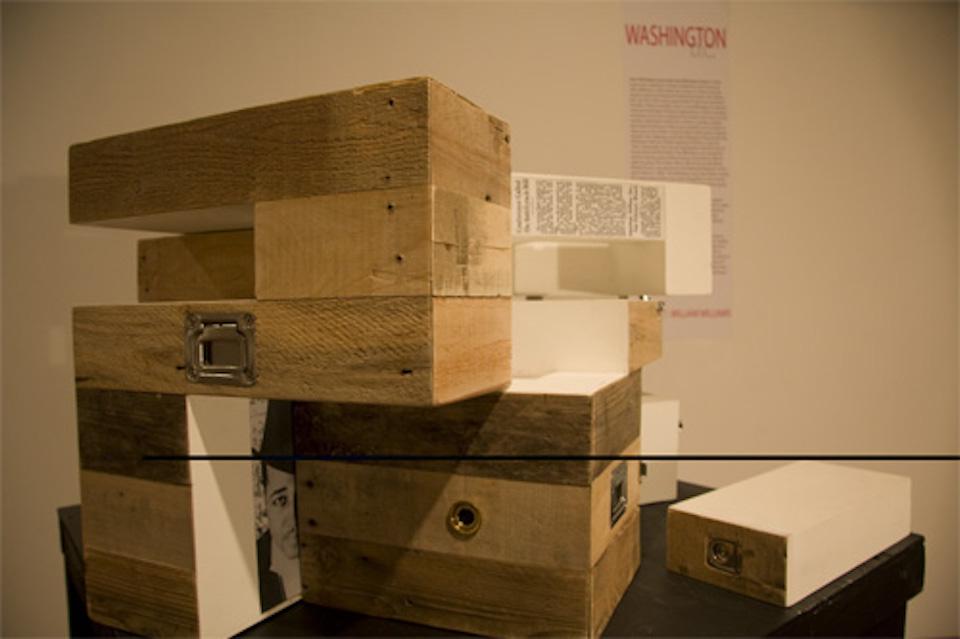3835 Campus Drive
Architecture Building (145 ARC)
College Park, MD 20742
United States
The Dresser Trunk Project is a traveling exhibition that chronicles the lost stories, memories and places of refuge for black travelers during segregation in the US South.
Curated by University of Virginia professor William Darryl Williams, this multimedia show offers an array of 11 "memory boxes" created by 10 artists, architects and landscape architects. These trunks represent places of refuge located in cities served by the Southern Crescent Line, which travels from New York to New Orleans.
The connection of cities by train facilitated the migration of black travelers between the North and South. This exhibition tells the story of 11 locations on the Southern Crescent rail line through the construction of memory boxes. These memory boxes join the concept of the Cornell box (created by artist Joseph Cornell) with the large dresser trunks that were popular during the early days of transatlantic and transcontinental travel.
The Dresser Trunks contain stories, photographs and maps describing the cultural history of these places and recreating the connections between them. These connections form a chain of identity, like pearls on a necklace, through which each takes a place at the table of history.
The timeliness of The Dresser Trunk Project is evident as numerous communities awaken to the reality that the preservation of their unique heritage is a critical component of cultural and economic development. Places like the Whitelaw Hotel in Washington, DC and the Dew Drop Inn in New Orleans have survived, but many others have been lost or forgotten. Many of these hotels, clubs and other sites are being lost to the ravages of time and the pressures of development.
The Dresser Trunk Project strives to stem the tide by linking isolated places together in a chain that restores each to its rightful place in architectural, music, and cultural history. When they are seen as part of the larger cultural phenomenon of segregated travel, whose influence is still felt today, their memory if not their physical existence can be preserved. This project aspires not merely to preserve but to pass on memory as a form of inheritance upon which communities can build and rebuild.
This exhibit was made possible by the Graham Foundation for Advanced Studies in the Fine Arts. It has been displayed at the Extension Gallery for Architecture in Chicago, the Elmaleh Gallery and the Bayly Art Museum at the University of Virginia, the University of Pennsylvania and Howard University. The exhibit was the subject of a conference at Columbia University. Curator Williams maintains an exhibition website with more information.
Exhibit Sponsor
This exhibition has been brought to the University of Maryland with the support of the Kibel Family Foundation.
Gallery Talk and Reception: Monday, April 20, 6:30–8:00pm
Speakers: William D. Williams, exhibit curator and Associate Professor of Architecture, University of Virginia
Yolande Daniels, Assistant Professor of Architecture, Columbia University
Professor of the Practice Gary Bowden, University of Maryland
Co-sponsored by the Kibel Family Foundation, the University of Maryland African-American Studies Department and the Office of the Associate Provost for Equity and Diversity

